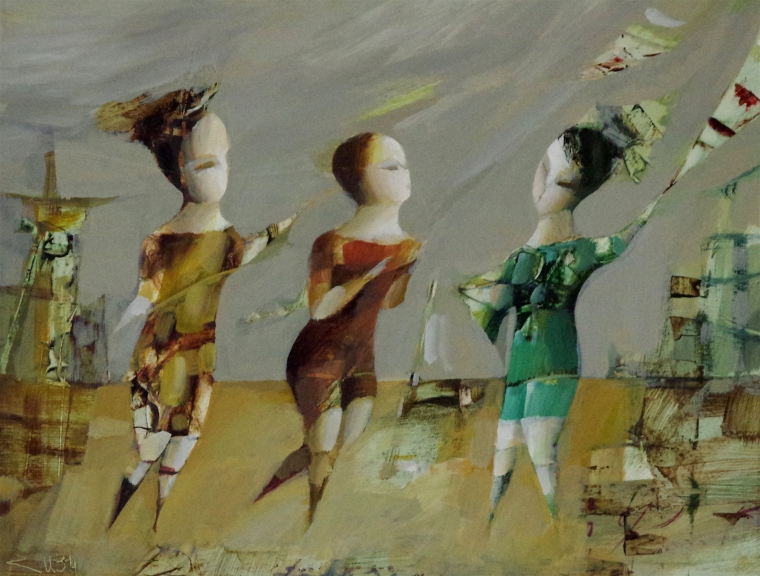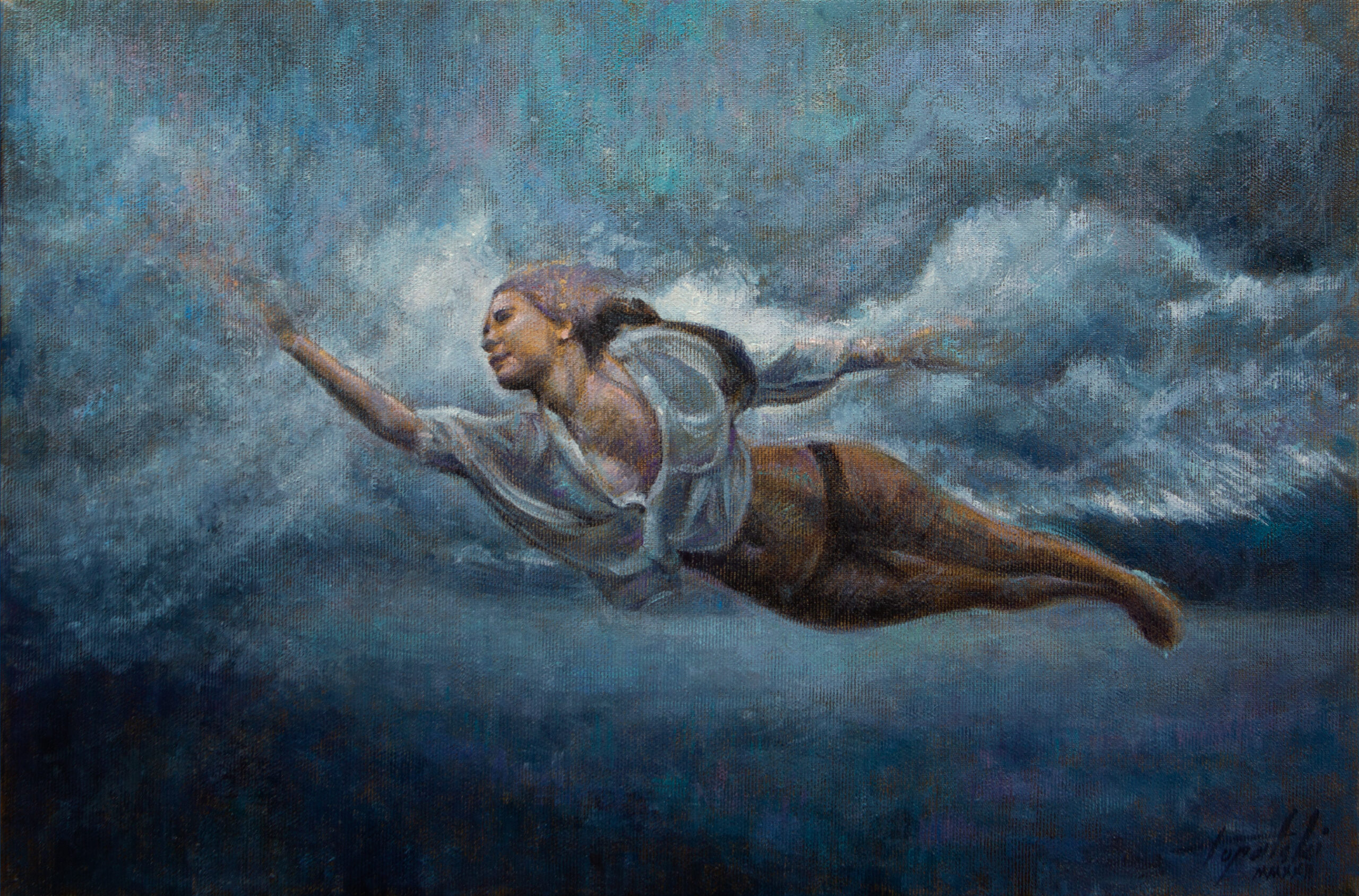The Influence of Figurative Oil Painting on Modern Art and Culture
The Influence of Figurative Oil Painting on Modern Art and Culture
Blog Article
The Development of Metaphorical Oil Painting: Understanding Its Historical Significance and Modern Interpretations
The evolution of metaphorical oil painting offers as a compelling lens with which to examine the interaction between creative expression and historic context. Contemporary artists, drawing from this abundant heritage, are now reinterpreting the human figure in means that challenge standard narratives.
Origins of Metaphorical Oil Painting
The beginnings of metaphorical oil paint can be traced back to the very early Renaissance in Europe, particularly in the 15th century. This period noted a significant departure from the level representations and stiff types particular of medieval art. Artists started to discover naturalism, emphasizing the human number and its psychological expression. The growth of oil paint enabled better deepness of color and detail, improving the realistic look and vibrancy of their work.

In this transformative age, figures were typically illustrated within contextually rich environments, showcasing not just their physical characteristics however also their psychological states. Pioneers such as Jan van Eyck and Titian took advantage of the tool's flexibility, using layering methods to accomplish luminance and texture. This advancement helped with the portrayal of detailed textiles and the subtleties of skin tones, adding to the development of portraiture and narrative scenes.
Furthermore, the Renaissance emphasis on humanism fostered a gratitude for individualism, which subsequently influenced artists to produce more dynamic and relatable numbers - figurative oil painting. Therefore, metaphorical oil painting arised as a powerful lorry for storytelling and psychological interaction, preparing for future imaginative movements and designs
Secret Historical Activities
Significant historic movements have actually shaped the development of figurative oil painting, each adding distinct philosophies and strategies that expanded the tool's possibilities. The Renaissance marked a crucial moment, stressing realism and the human type, with musicians like Leonardo da Vinci and Michelangelo pushing the limits of anatomical accuracy and viewpoint. Following this, the Baroque period brought remarkable contrasts of light and darkness, exemplified by Caravaggio, that instilled spiritual motifs with intense emotionality.
The 19th century introduced Romanticism and Realistic look, where artists such as Delacroix and Courbet challenged timeless perfects, concentrating on private expression and day-to-day life. The arrival of Impressionism additionally changed the medium by highlighting the impacts of light and shade, leading to a departure from standard depiction.
In the very early 20th century, movements like Expressionism and Cubism redefined figurative paint via abstraction and the expedition of psychological depth. Each of these movements not only showed the social adjustments of their times yet also prepared for contemporary interpretations. The interplay between these historical motions has produced a rich tapestry of ideologies and styles, affecting contemporary musicians in their search of recording the human experience on canvas.
Strategies and Products Advancement

Throughout the Baroque period, strategies such as chiaroscuro and sfumato emerged, boosting the emotional vibration of figurative make-ups. Artists began to experiment page with lusters and impasto, manipulating structure and luminosity. By the 19th century, innovations like making use of pre-mixed paints in tubes revolutionized access, enabling musicians to paint en plein air and catch the fleeting results of light.
The 20th century observed the intro of synthetic pigments and mediums, which increased the combination and modified the consistency of oil paints. In addition, the exploration of new application strategies, such as palette blades and brushes of differing tightness, more diversified creative expression. Collectively, these improvements mirror the progressing partnership between materials, methods, and the imaginative vision inherent in figurative oil painting.

Contemporary Analyses
Contemporary interpretations of figurative oil painting reflect a dynamic dialogue between tradition and innovation, where artists challenge established norms and explore diverse themes. This evolution manifests in various ways, as contemporary artists mix timeless strategies with modern-day principles, usually resolving social, political, and personal narratives.
Many practitioners draw ideas from historic jobs, yet they infuse their pieces with modern viewpoints, making use of the human type as an automobile for commentary on society, gender, and identification. Artists progressively try out abstraction, distortion, and mixed media, which permits for a wider interpretation of the number and its context.
In addition, using vibrant shade combinations and non-traditional compositions often offers to interfere with conventional viewing experiences, prompting vital engagement from target markets. This shift in emphasis prolongs past looks; it shows an expanding understanding of the complexities of human experience in an interconnected world.
As metaphorical oil painting proceeds to progress, it remains a crucial medium for checking out the subtleties of contemporary life, personifying both a respect for heritage and a dedication to progressive idea. The result is a rich tapestry of expression that resonates with the intricacies of the modern-day human condition.
Impact on Modern Art
The influence of figurative oil painting on contemporary art is extensive, as it has actually continually motivated a myriad of imaginative movements and methods throughout the 21st and 20th centuries. From Expressionism to Surrealism and the original source past, the expedition of the human figure has stayed a main motif, permitting artists to convey complicated emotions and stories. This emphasis on figurative representation has actually led to a re-examination of traditional strategies, resulting in innovative methods that blend realism with abstraction.
Additionally, modern artists have embraced figurative oil painting as a way to address political and social concerns, making use of the medium to challenge perceptions of culture, gender, and identification. The resurgence of interest in metaphorical job in current years shows a wishing for link in a significantly electronic world, where human experience and feeling are extremely important.
In addition, the discussion in between figurative oil paint and modern art is obvious in the jobs of musicians such as Kehinde Wiley and Jenny Saville, who draw on historical references while instilling their items with contemporary significance. Eventually, metaphorical oil painting continues to shape and redefine contemporary imaginative expression, highlighting its enduring importance in the art world.
Final Thought
The development of metaphorical oil paint emphasizes its historic relevance and versatility across different artistic movements. Ultimately, figurative oil paint stays an important tool for checking out the human experience, reverberating profoundly in today's electronic landscape.
The advancement of metaphorical oil paint serves as an engaging lens with which to examine the interplay additional reading in between artistic expression and historical context.Substantial historic movements have actually shaped the advancement of metaphorical oil painting, each contributing unique philosophies and methods that expanded the tool's opportunities.As historic movements formed the trajectory of figurative oil painting, the methods and materials utilized by musicians have additionally gone through substantial makeovers. figurative oil painting.The effect of figurative oil paint on contemporary art is extensive, as it has consistently influenced a myriad of creative motions and practices throughout the 20th and 21st centuries.The evolution of metaphorical oil painting underscores its historic importance and adaptability across numerous creative activities
Report this page